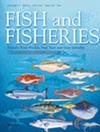估算随时间变化的生产力和参考点:以北海底栖鱼类为例
IF 6.1
1区 农林科学
Q1 FISHERIES
引用次数: 0
摘要
海洋鱼类种群的生产力决定了最大可持续产量(MSY)和对开发利用的复原力。虽然MSY和MSY等生物参考点取决于物种特征和种群密度,但它们也受到环境变异性和生态相互作用的影响。然而,通常使用的模型,例如库存招募和剩余生产模型(SPMs),通常假设随着时间的推移生产率和参考点不变,潜在地忽略了重要的生态系统变化。我们进行了一项半系统的文献综述,以确定无协变量的方法来模拟海洋种群的时变生产力。在此基础上,我们开发了一个连续时间随机SPM框架,允许内在增长率()和承载能力()随时间变化和共变。仿真实验表明,时变模型,特别是具有和相关变化的时变模型,在保持鲁棒收敛性的同时显著提高了估计精度。作为一个案例研究,我们将该模型应用于北海七种商业上重要的底栖鱼类种群。结果显示,在过去的40年里,MSY平均下降了56%,其中圆鱼的下降幅度大于比目鱼。生产力的时间模式与海底温度和盐度等环境变量相关,表明了潜在的驱动因素。我们的研究结果为北海海底种群的长期生产力下降提供了证据,并为重建历史参考点提供了一种无协变量的方法。这项工作强调了适应性管理战略的必要性,这些战略应考虑到在持续的环境变化下不断变化的生产力制度。本文章由计算机程序翻译,如有差异,请以英文原文为准。
Estimating Time‐Varying Productivity and Reference Points: A Case of North Sea Demersal Fish Stocks
The productivity of marine fish populations determines both maximum sustainable yield (MSY) and resilience to exploitation. While biological reference points like MSY and depend on species traits and population density, they are also influenced by environmental variability and ecological interactions. However, commonly used models, such as stock–recruitment and surplus production models (SPMs), often assume constant productivity and reference points over time, potentially overlooking important ecosystem changes. We conducted a semi‐systematic literature review to identify covariate‐free approaches for modelling time‐varying productivity in marine populations. Based on this, we developed a continuous‐time stochastic SPM framework that allows both the intrinsic growth rate () and carrying capacity () to vary and co‐vary over time. Simulation experiments showed that time‐varying models, especially those with correlated changes in and , significantly improved estimation accuracy while retaining robust convergence. As a case study, we applied this model to seven commercially important demersal fish stocks in the North Sea. Results revealed a 56% average decline in MSY over four decades, with roundfish showing greater declines than flatfish. Temporal patterns in productivity correlated with environmental variables such as bottom temperature and salinity, indicating potential drivers. Our findings provide evidence of long‐term productivity declines in North Sea demersal stocks and offer a covariate‐free method for reconstructing historical reference points. This work underscores the need for adaptive management strategies that account for shifting productivity regimes under ongoing environmental change.
求助全文
通过发布文献求助,成功后即可免费获取论文全文。
去求助
来源期刊

Fish and Fisheries
农林科学-渔业
CiteScore
12.80
自引率
6.00%
发文量
83
期刊介绍:
Fish and Fisheries adopts a broad, interdisciplinary approach to the subject of fish biology and fisheries. It draws contributions in the form of major synoptic papers and syntheses or meta-analyses that lay out new approaches, re-examine existing findings, methods or theory, and discuss papers and commentaries from diverse areas. Focal areas include fish palaeontology, molecular biology and ecology, genetics, biochemistry, physiology, ecology, behaviour, evolutionary studies, conservation, assessment, population dynamics, mathematical modelling, ecosystem analysis and the social, economic and policy aspects of fisheries where they are grounded in a scientific approach. A paper in Fish and Fisheries must draw upon all key elements of the existing literature on a topic, normally have a broad geographic and/or taxonomic scope, and provide general points which make it compelling to a wide range of readers whatever their geographical location. So, in short, we aim to publish articles that make syntheses of old or synoptic, long-term or spatially widespread data, introduce or consolidate fresh concepts or theory, or, in the Ghoti section, briefly justify preliminary, new synoptic ideas. Please note that authors of submissions not meeting this mandate will be directed to the appropriate primary literature.
 求助内容:
求助内容: 应助结果提醒方式:
应助结果提醒方式:


